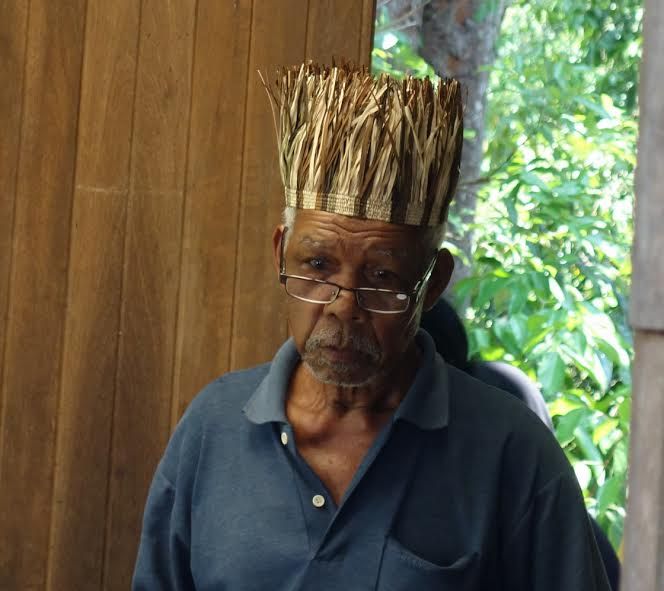 |
The Explorers’ trip to the Orang Asli village in Gombak was a quite special event for all of us. Living in the city, we read and learn about the native tribes of Malaysia, but don’t often come into contact with them, or get the chance to experience aspects of their way of life.
“It was the first time that I met the Orang Asli since moving to Malaysia” Vivin
On Monday, 15th February, twelve excited and enthusiastic members of the Explorers group assembled at the Orang Asli village, together with their guide for a few hours, Mr. Kalam Pie. A retired military man, Kalam dedicates his time to supporting and promoting awareness of the local Orang Asli tribes and their culture. |
|
|
“This Orang Asli experience was the nicest I had during my stay in Malaysia because the people there showed their culture with pride, took time, knew a lot, the music ….” Monica
There was a short introduction on the current situation of the Orang Asli in Malaysia, after which we headed through the village towards the jungle. It was a leisurely 2km trek along a well-worn path criss-crossed by streams. Along the way we came across primitive huts, medicinal leaves (tried and tested on a leech bite!), edible ferns, stingless bees and wild ginger. |
||
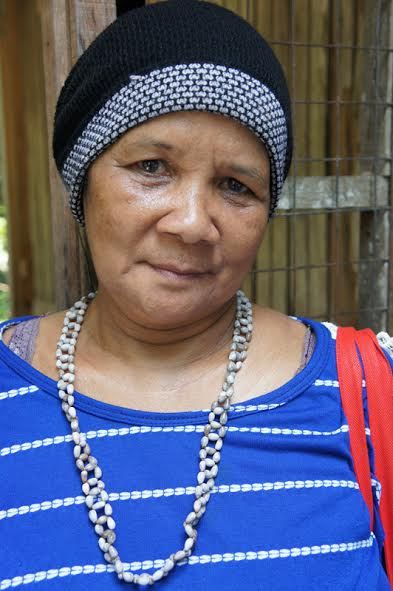 |
Kalam darted backwards and forwards on his slippered feet amongst us to help out, answer questions and give information.
“The wooden hut looking like a scene from the Jungle Book - I was expecting Mowgli to walk by at any minute (the bear necessities, the simple bear necessities!) with Shere Khan in the trees over our heads.“ Jeanie
On arrival at the jungle camp, we met the Orang Asli ladies preparing our meal and were introduced to Raman, who would demonstrate some traditional tribal activities. Eager to check out the food (jungle trekking makes you hungry!) we saw the rice cooking in the bamboo stems, chicken roasting over the fire, and vegetables simmering in the pot. With time before lunch, we went looking for mengkuang leaves suitable for weaving. The trees were found a short distance away with a steep climb upwards amongst the undergrowth.
Once back at camp, we were allowed to sit and rest whilst Kalam and Raman demonstrated the weaving of the mengkuang leaves, showed us the blowpipe and the skill required to make the darts, and amazed us with Raman’s one-nostril flute playing (for which he is quite famous). |
|
 |
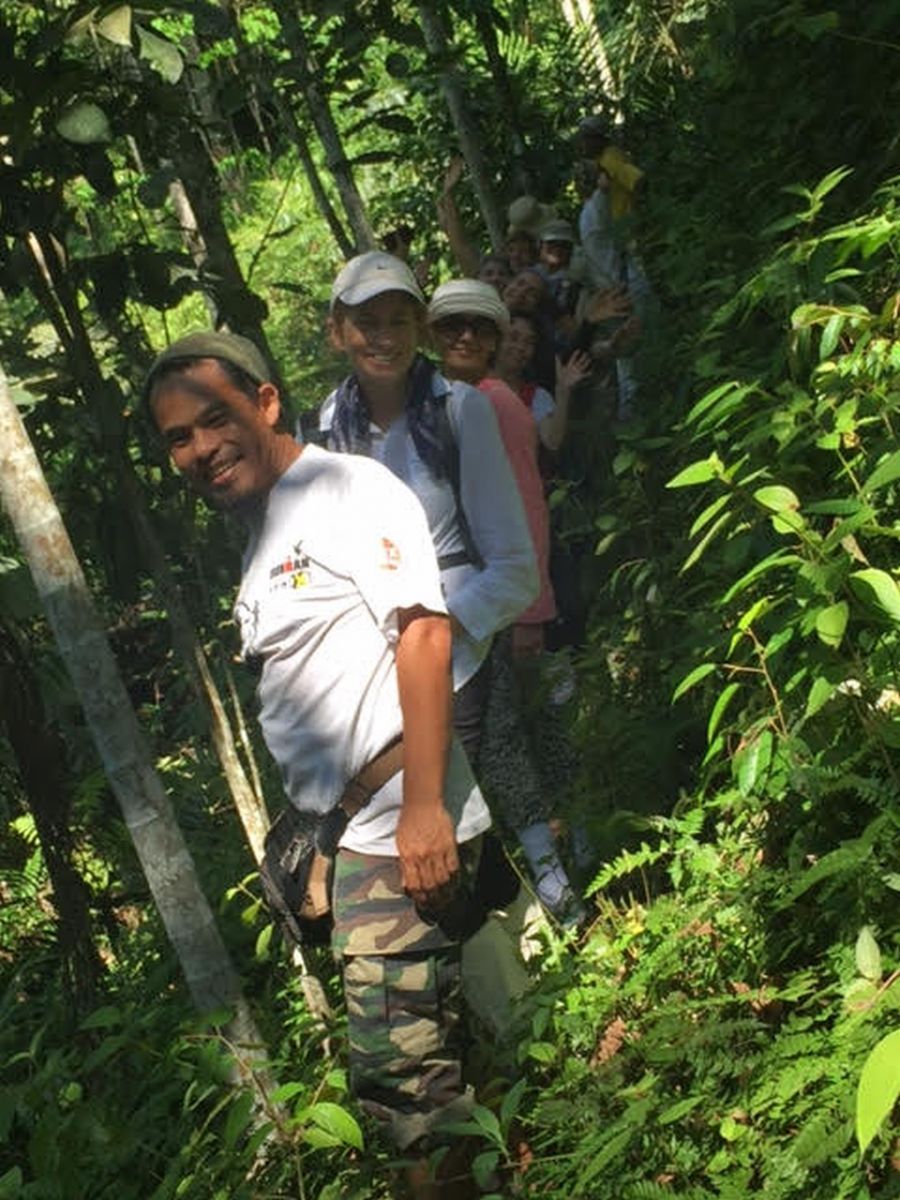 |
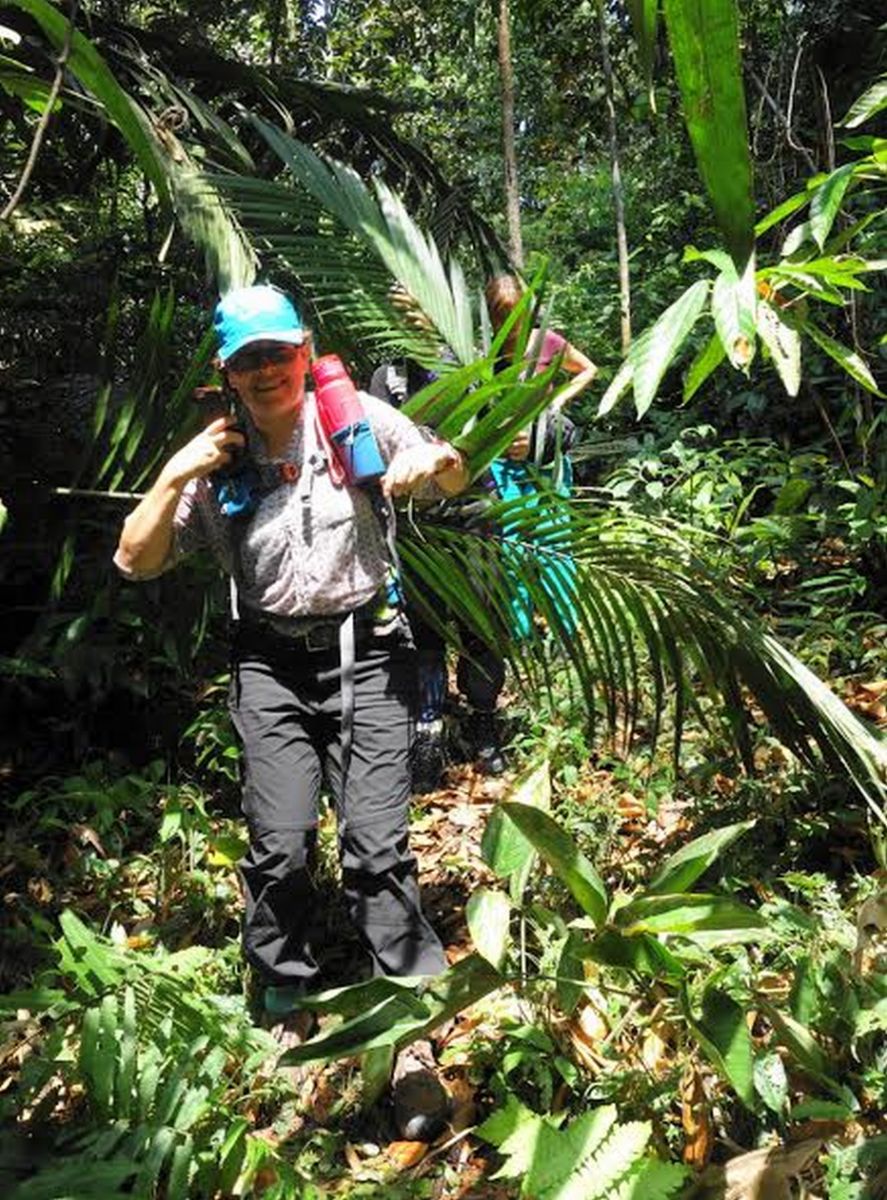 |
|
“The Orang Asli’s skill to survive is something that I would like to learn more… been in a comfortable zone for such a long time… makes me forget about how to survive, especially in the jungle. Who knows maybe someday I will need it :).” Adik
“The wisdom of our hosts and guides affected me deeply. Their knowledge and skills which allow them to live so sustainably in close connection with their environment - the jungle has everything they need, from leaves to use as medicine on leech bites through to the multi-purpose bamboo and palms used for cooking utensils, walls and roofs of dwellings, mats, blowpipes, darts and musical instruments” Susan |
||
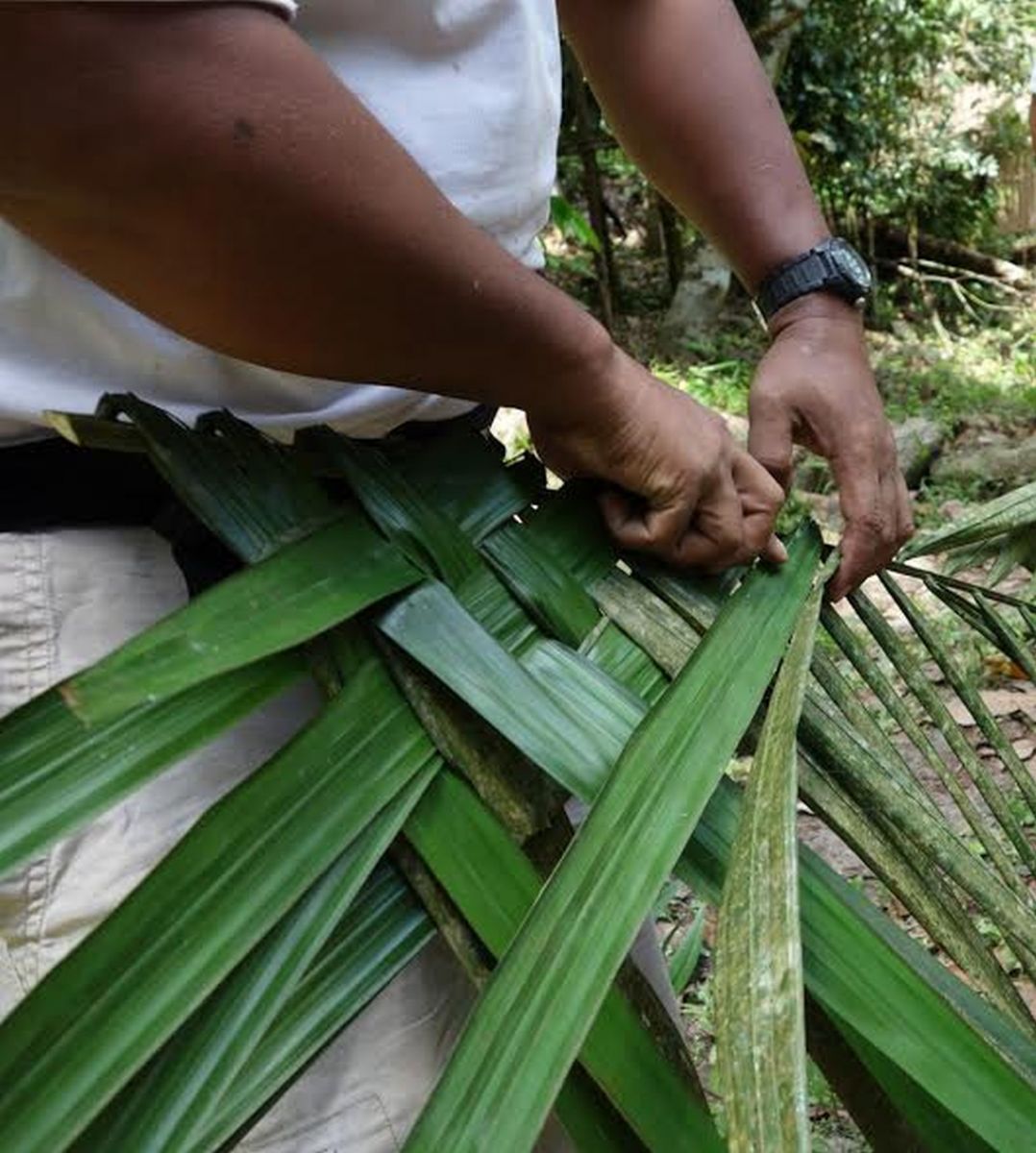 |
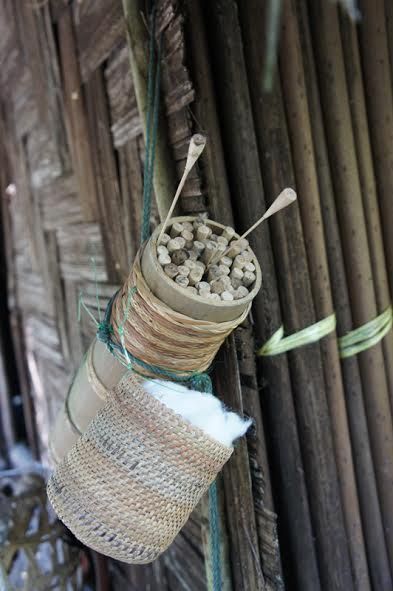 |
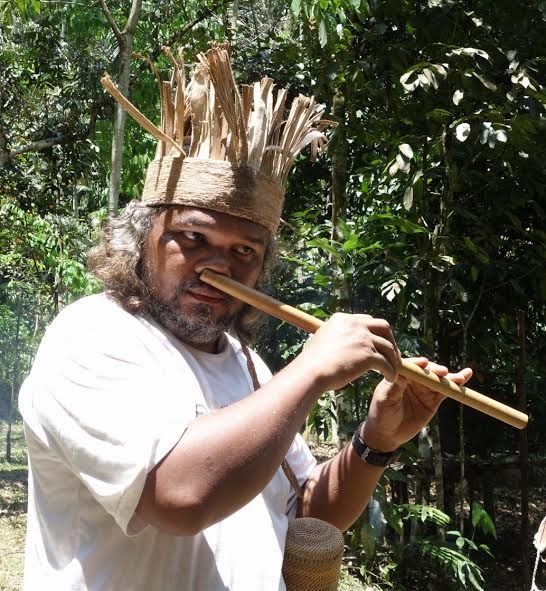 |
|
A simple, healthy buffet –style lunch was served using banana leaves as plates. “…and what a delicious lunch they cooked to share with us in such a beautiful, peaceful location” Susan After lunch we were split into groups and tried our hand at using the blowpipe, weaving mengkuang leaves and traditional craft weaving. Things are not always as easy as they look, although some people are naturals! |
||
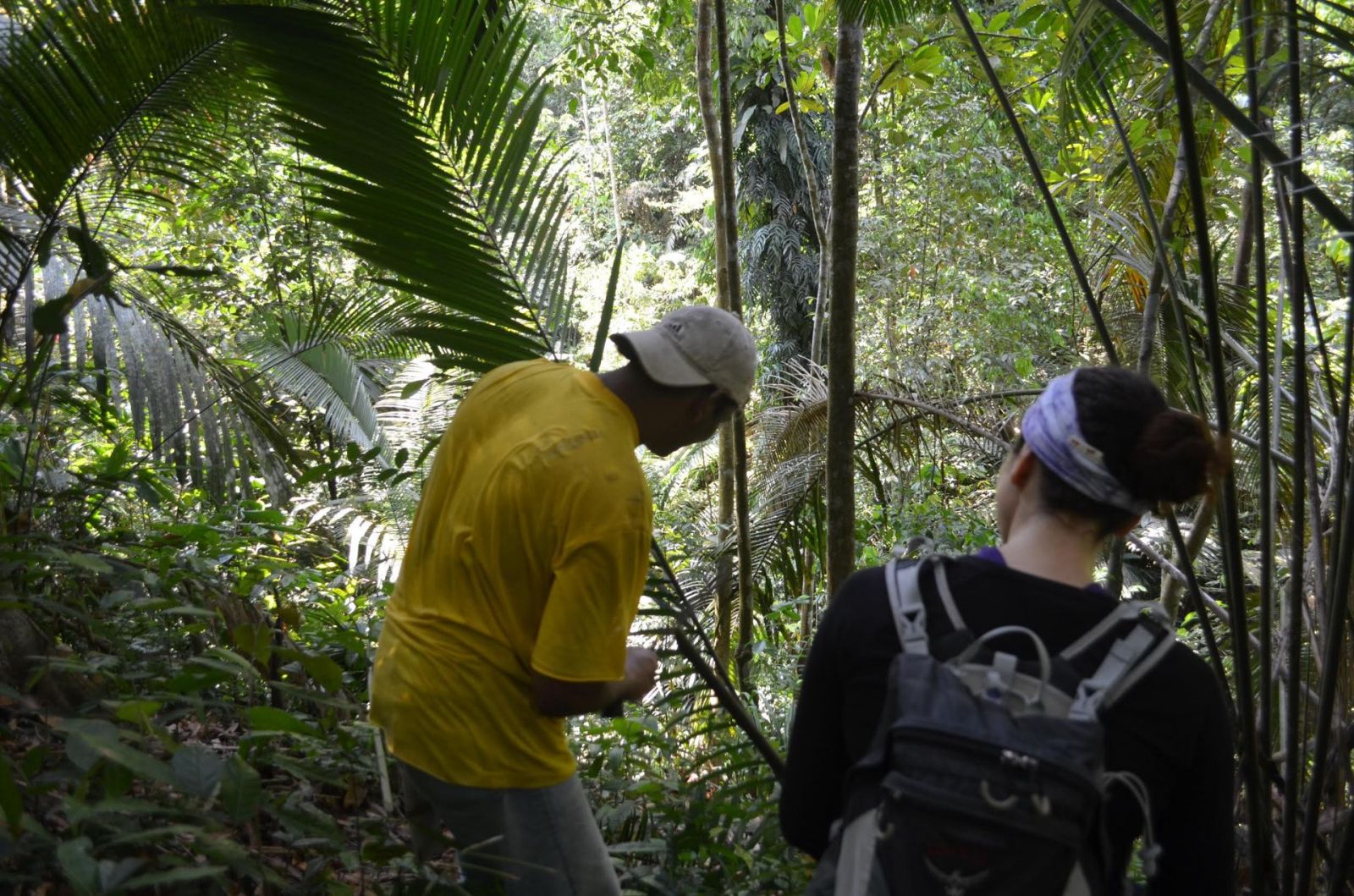 |
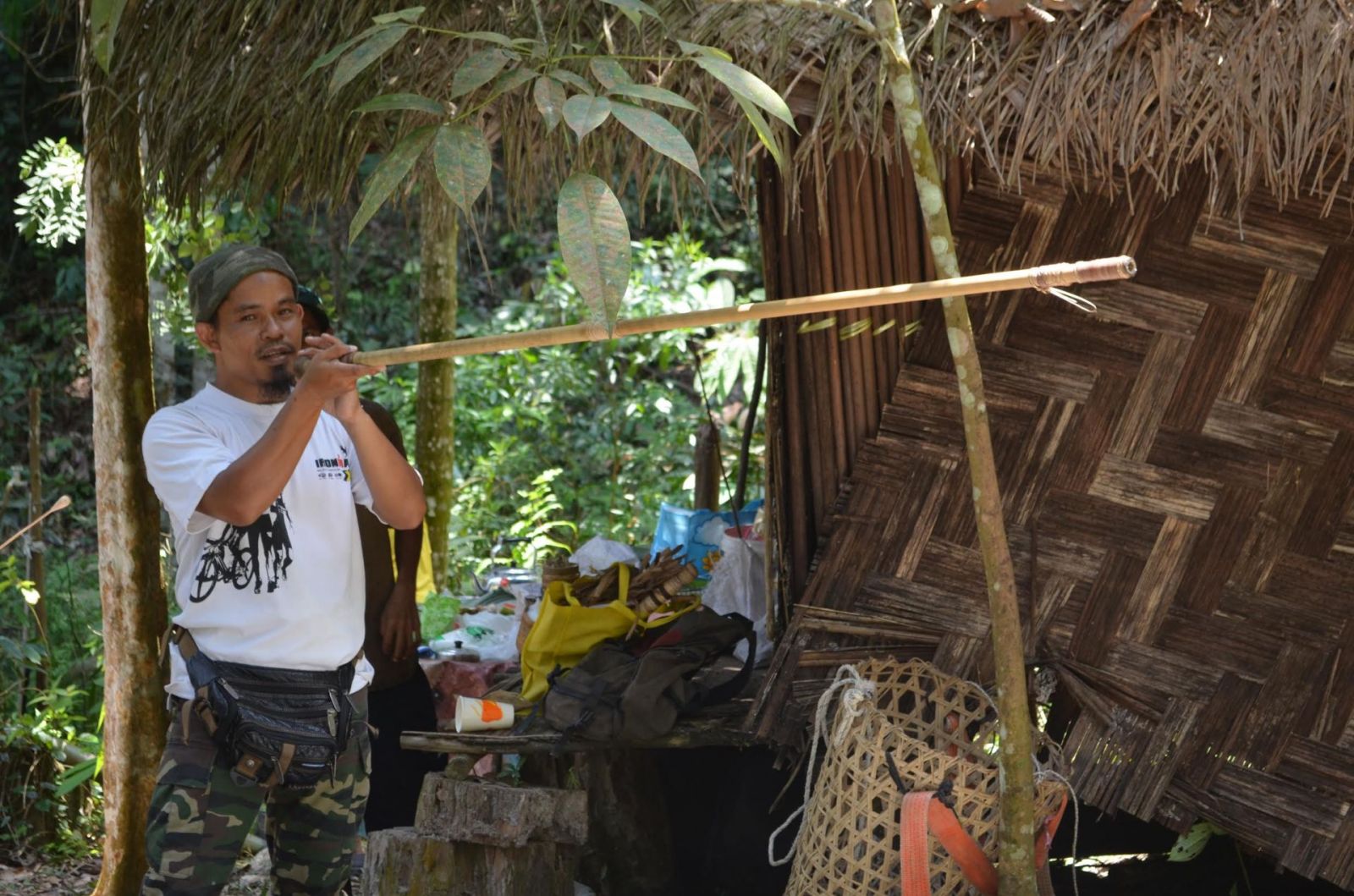 |
|
Leaving the jungle, we thanked our hosts for sharing their culture with us. They were genuinely full of appreciation for our visit. Raman played us a beautiful parting melody as we headed back towards the village towards the small shelter where we could buy the traditionally made handicrafts. The Orang Asli village in Gombak is home to ten different tribes. Each tribe traditionally speaks their own language (different to Malay) and has their own customs and culture. Fighting to survive within a changing world and with minimum help from the government… |
|
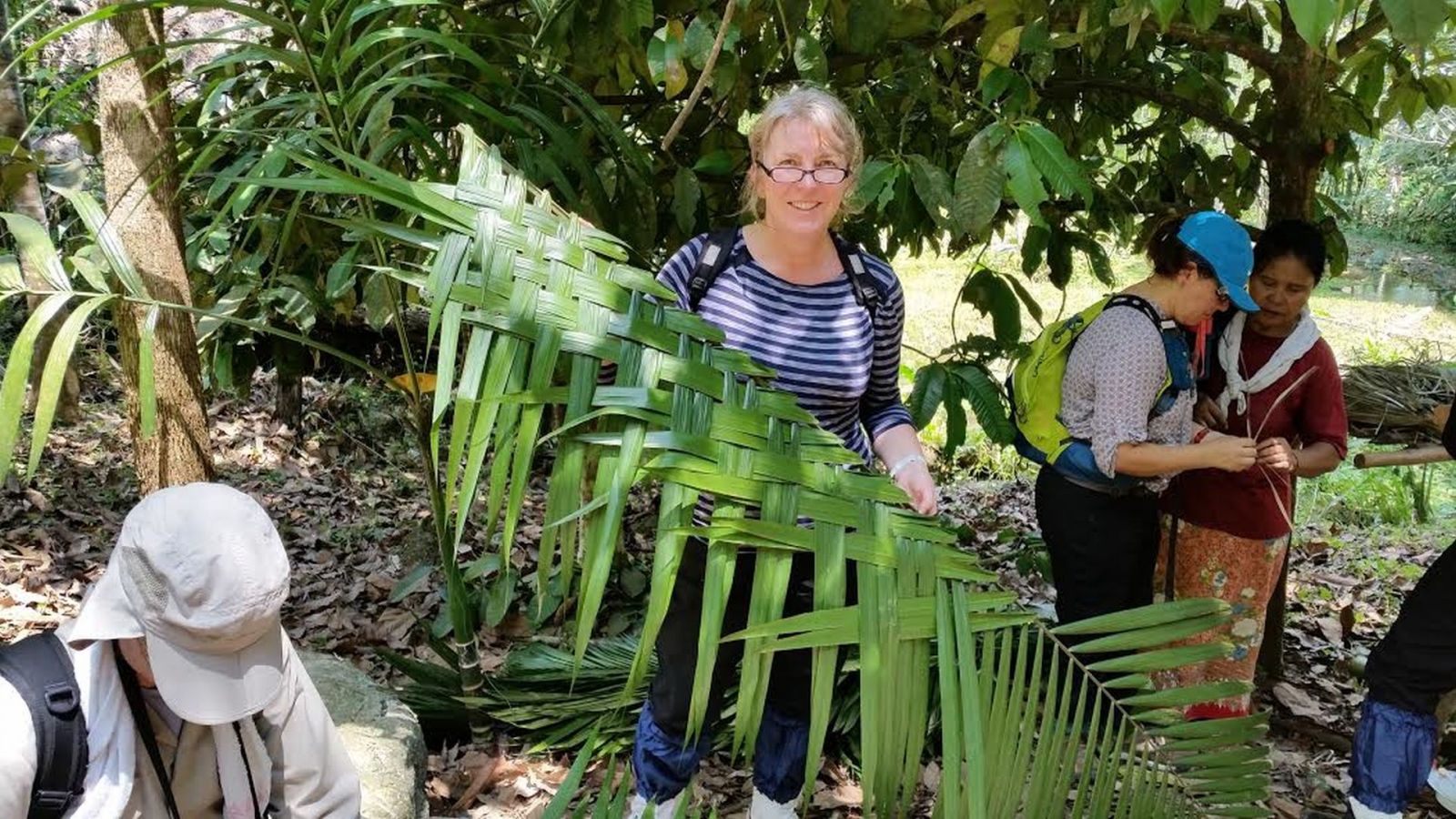 |
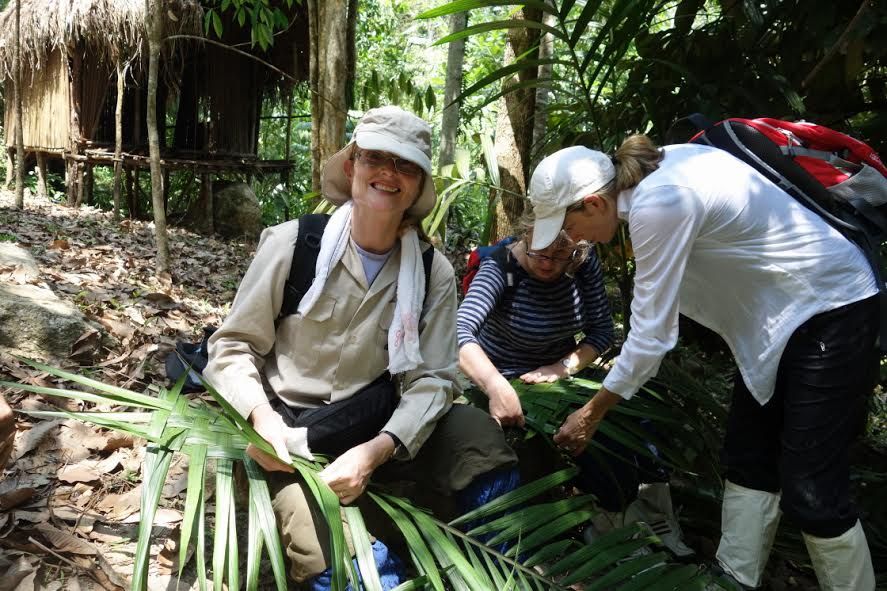 |
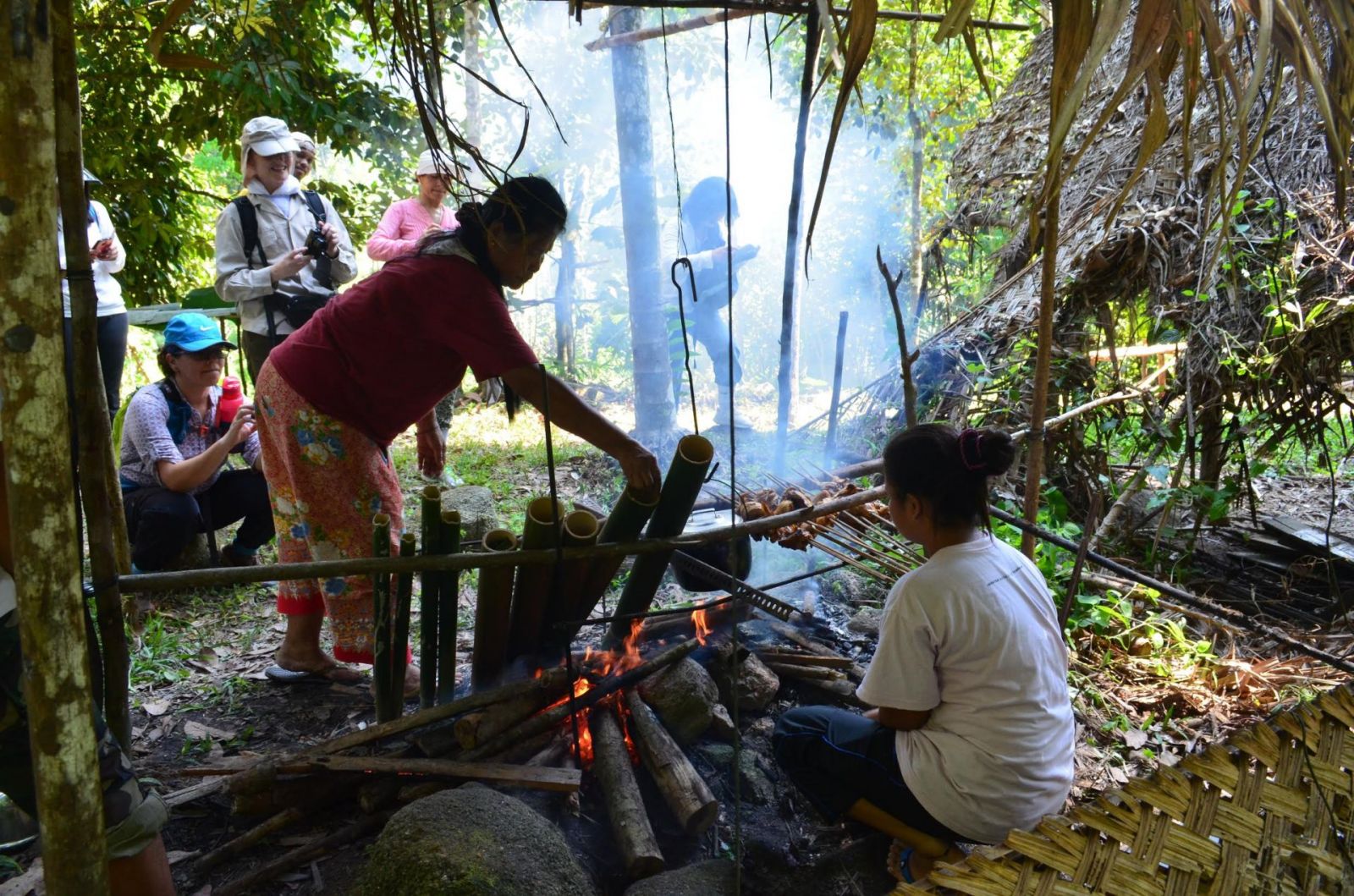 |
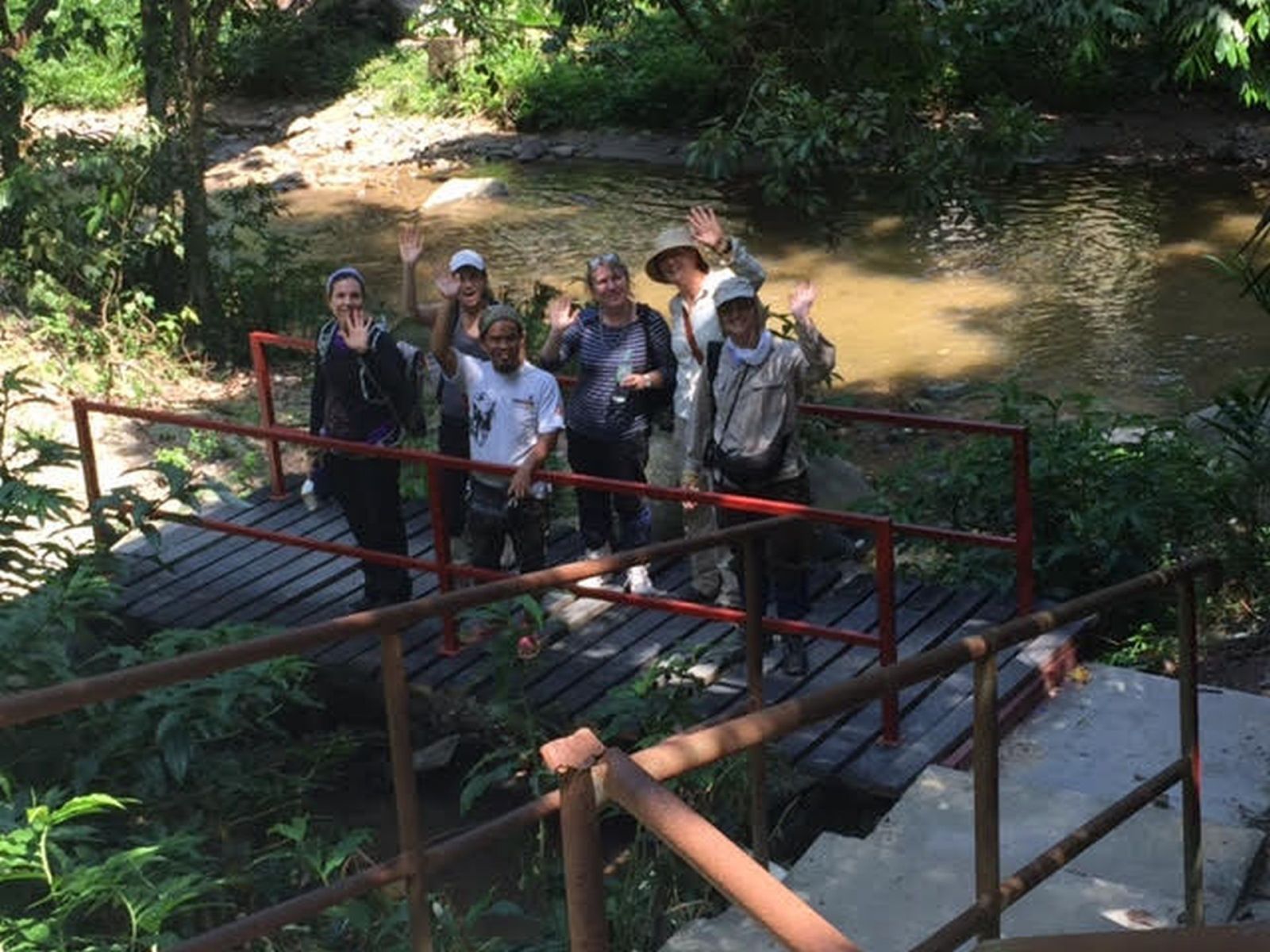 |
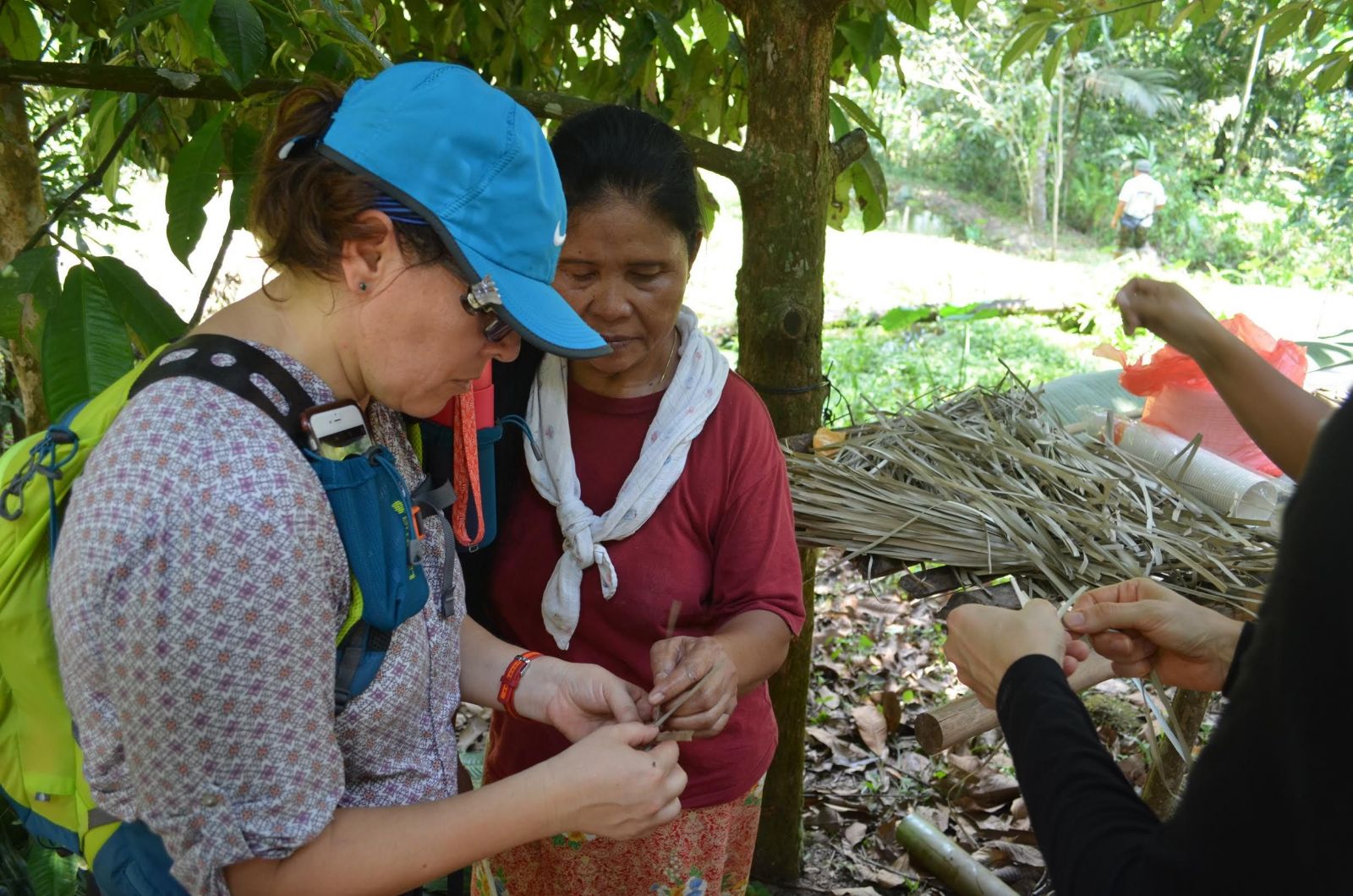 |
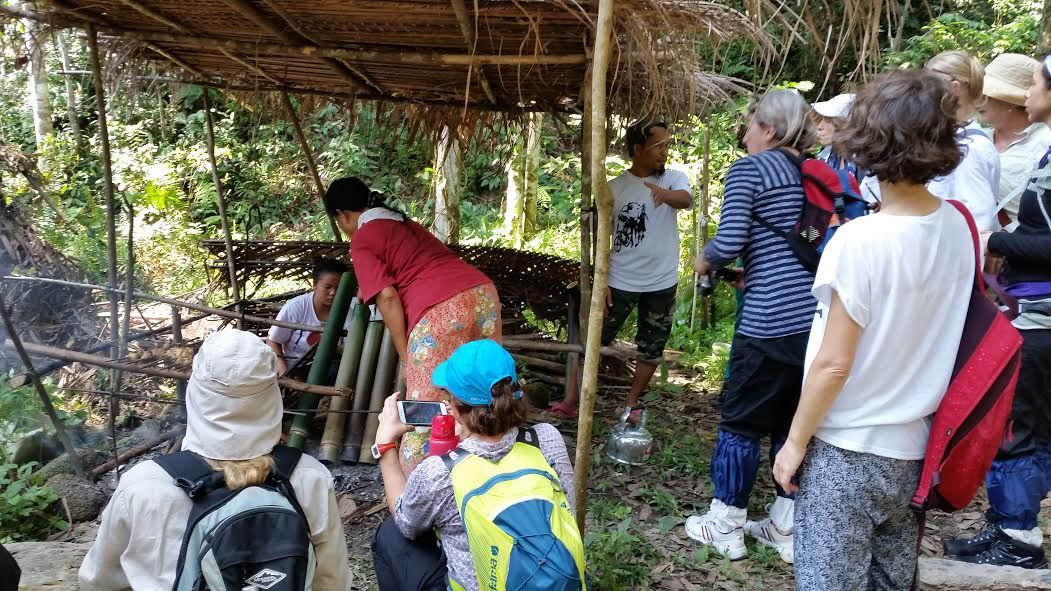 |
|
….“ I found out that they (Orang Asli) have to send their children going to school with their own pocket money” Vivin ….this group of approximately 1500 Orang Asli welcome visitors, truly grateful that there is interest in their culture and willingness to support them with a modest fee for food, activities and buying of handicrafts. “….and the lovely, worn, gentle face of the woman I bought beads from - and now I'm wearing the same necklace that she's wearing, here in downtown KL while I sit at my computer and she's in the jungle hoping that more people like us will visit them and give their way of life a chance to continue in the 21st century.” Jeanie
Text: Mandy van Veen
Photos/Quotations: Jeanie Kennedy, Susan Sawyer, Vivin Sjamsir, Monica Kroening, Adik Diah |
|




